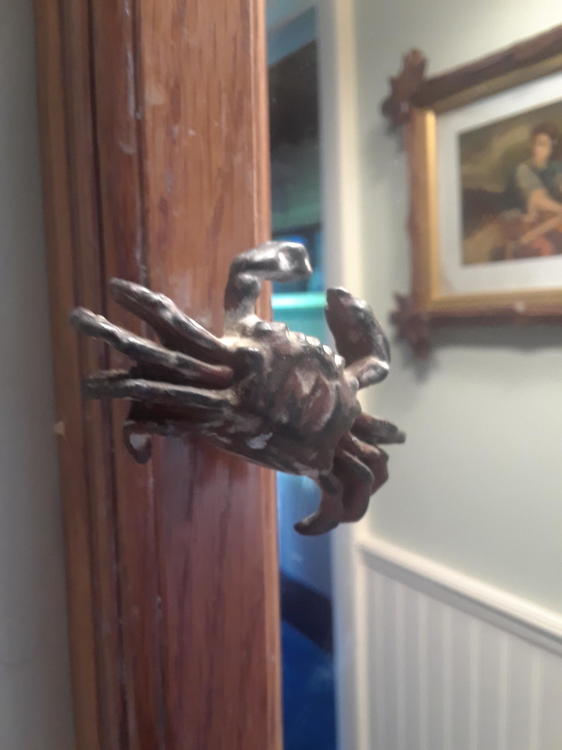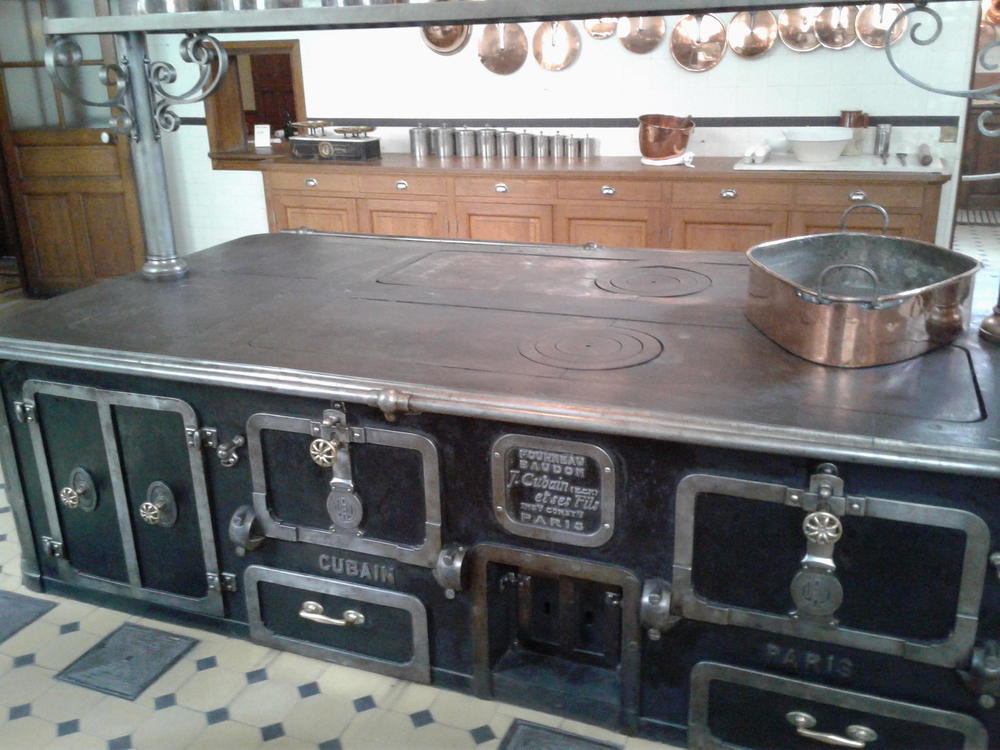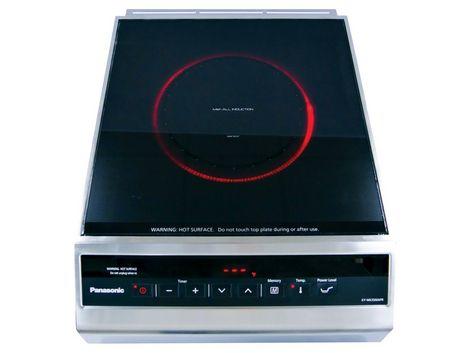
boilsover
participating member-
Posts
918 -
Joined
-
Last visited
Content Type
Profiles
Forums
Store
Help Articles
Everything posted by boilsover
-
LOL, I haven't been missing anything. I've been cooking on induction off and on for a couple of years now. IMO, until now, choosing induction has precluded using the very best cookware. Gas may still be a better mode, but at least there's no longer a reason to compromise with--or discard--cookware.
-
-
I have seen some modern homes with a secondary "butler's" kitchen, which can basically do it all. I know one couple who have this setup (and one outdoors) and never use any of them.
-
Please tell me you didn't roast that baby?
-
Looks like a high level of modern finish, especially for a Victorian. It's odd how fashions change. I was in a 1907 bourgeosis mansion in Paris last year, and back then, the worst possible feature a house could have was the sight and smell of cooking! The architect included massive concrete caissons and a huge ventilation system to make sure the dining experience was only on the family's plates. Even the staff dining area was isolated.
-
I've lived all over. When it's really hot, I cook outside, regardless of the modality du jour. I've heard people say that ##5 and 7 can be interrelated, i.e., that cooking with gas indoors in a hot climate under A/C increases the utility bill for cooling. This sounds to me like a First World problem.
-
Bravo! Reasons why some love them (in my opinion's order of precedence): 1. Convenience. People like glass cooktops, but people tend to hate radiant glass tops. They wipe (mostly) clean, and you can treat the glass like a countertop extension when you're not cooking. 2. No real choice. Many induction users would prefer gas, but don't have it available or not at a reasonable price to run lines. Coil and radiant aren't serious contenders. Likewise with venting--many people can't or won't put in a good hood for a high output gas range. 3. Control. What is really means is repeatability. If you have 20 settings and you learn that 7 is right for X, you can set 7 every time. Whereas with other modalities, you actually have to be more discerning. 4. Aesthetic and Fashionable. They tend to "disappear", and technophiles congratulate themselves on how "advanced" the modality is. It's (and they're) so advanced, they don't mind fooling with touchpads and tubercular glowing digital displays. 5. Cooler. If you cook a lot indoors in hot climates, this is an advantage. I say, "if you can't stand the heat..." 6. Safety. People think they and their little ones won't burn themselves. This is not true, but they may not get burned as badly and you can't turn on a vacant hob accidentally. 7. Energy Savings. This isn't true, either, when you take into account the entire utility infrastructure(s). Electricity savings over coil and radiant is real but tiny. Cooktop energy consumption is an insignificant fraction of an average USA household's energy use.
-
Well, all-metal would be nice, as would be meaningful/accurate temperature settings and more granular power settings. And maybe a control knob?
-
Caldero Cast Aluminum Pots - Anyone familiar with them?
boilsover replied to a topic in Kitchen Consumer
Well, I learned this from a book written by the "Omelet King", Chef Rudy Stanish. See, http://www.post-gazette.com/news/obituaries/2008/02/12/Obituary-Rudolph-B-Stanish-Omelet-king-for-the-rich-and-famous/stories/200802120223 It's not seasoning in the same sense as people talk about for cast iron and carbon steel, and doesn't last as long. It doesn't leave any discernible layer of polymerized oil, either. Here's how I was taught. Pick a high smoke point cooking oil. Pour in a 1/8" layer of oil in the pan, and heat it up slowly. As it comes up, wipe the interior of the pan as high as you like. Heat to just below the smoke point temperature (If you don't have a thermometer, up to the point where the oil shimmers actively). Watch for runnels or "tears" of oil on the walls, and wipe them smooth. You do not want the oil to show yellow anywhere or smoke. Remove from the heat and let the pan cool to room temperature. Dump about a 1/4 cup of kosher salt into the cooled oil, and scrub the slurry vigorously with a rag all around the pan. Dump the oily salt and wipe clean. You're done. Some cooks do this a couple times. You can make this "seasoning" last longer by thereafter only cleaning the pan with more oil+salt scrubs, i.e., no soap or other surfactants. And the maximum nonstick effect is attained if you dedicate one pan to eggs and crepes. It's still stickier than Teflon, but I think you'll be impressed. The process works on SS pan linings, too. -
Caldero Cast Aluminum Pots - Anyone familiar with them?
boilsover replied to a topic in Kitchen Consumer
YVW. Really, unless you can comfortably lift thick copper, thick aluminum really can't be beat in terms of thermal performance, and is the undisputed champ for value. But why sell you a $20 pot when a maker can talk you into forking over $200 or $400? And did you know you can also "season" aluminum pans? -
Caldero Cast Aluminum Pots - Anyone familiar with them?
boilsover replied to a topic in Kitchen Consumer
LOL, no, of course not. IMO, there isn't a health concern, no matter what you cook or or how long. The concerns are taste and color, and I don't even credit those very much. Can 80% of restaurants worldwide be wrong? Let's take a peek down the rabbithole, shall we? Aluminum has a semi-unique property whereby it (and its alloys used in bare cookware) doesn't stay bare. It oxidizes or "passivates" very quickly in the presence of oxygen. How quickly? About the time it takes for you to wash, dry and put away your pan. What you're actually cooking on is aluminum oxide, which is harder and less reactive than pure aluminum. You can think of aluminum pans as being self-healing. That's all hard anodizing is, BTW, except that HA creates a much thicker oxide layer. Aluminum's astonishingly fast oxidation is the reason why there is virtually no metallic aluminum to be found in nature, despite the fact that it's the third most common element on Earth. -
Caldero Cast Aluminum Pots - Anyone familiar with them?
boilsover replied to a topic in Kitchen Consumer
Yes, they're comparable. Even the thickest ones are far lighter than ECI. In my opinion, the only downside (and it is somewhat overblown) is reactivity over long cooktimes with salty, acidic foods. Do you make much tomato sauce and sauerkraut? I sold the vast majority of my Le Creuset when I realized they're poor performers for most things. I didn't get much for them, which is Exhibit A for my stupidity in buying it all in the first place. French + Pretty + Expensive + MtH (Marketed to the Heavens) must be good, right? -
Yes, it will require a different plug/receptacle. That makes sense, when you consider that the most powerful induction hotplates wired for 110VAC are only 1800W output. High-performance home induction ranges offer greater power, up to the 3500W max of this hotplate. Similarly, most home coil ranges are around 2400W output. So this unit offers equivalent power to commercial gas hobs, in a hotplate format. I managed to get someone else to pay for this unit. We will be using it in the development of hyperconductive cookware, since we can now induce aluminum and copper prototypes and comparators.
-
On the heels of the thread about the Polyscience/Breville ControlFreak, it appears all-metal induction hobs have now arrived in USA. The Panasonic KY-MK3500 is a 208/220v single phase hotplate that should operate on any home circuit that is wired for coil or radiant ranges. It is rated to 3500 Watts at the "old" 24kHz frequency (ferromagnetic pans), and 2500 Watts at the 90kHz frequency chosen for aluminum and copper, and switches automatically between the two. Panasonic claims its temperature settings and IR sensors operate through the solid glass rather than by a button probe or thermistor mounted on the underside of the glass. There is also a lighted ring around the hob to indicate operation and high temperature. https://shop.panasonic.com/support-only/KY-MK3500.html The unit retails for an average of $2,400, but one retailer was offering it for only $611, so I ordered one. https://www.ckitchen.com/p/panasonic-ky-mk3500-met-all-induction-range.html Edit: I now see it is listed at $1,700! Amazon has it at $2,250. See, also: https://www.youtube.com/watch?v=kQjP3E8aB4A
-
How does the design address leaks/spills through the button hole?
-
You can never get too much fiber.
-
It's been reported on another site that, if "Slow" is selected, there is no overshoot: "As for run up temps another feature of the CF is the control of ramp up time. Slow/Med/Fast. If on fast, and I was heating egg yolks for hollandaise, for example, I'd likely cook the yolks if I kept it on the burner. When on slow I can literally set the temp at say 160/170 and walk away without any risk of the yolks cooking. In other words the control is so precise that there's no overshoot whatsoever." Do you agree?
-
The Post-Its look delish...
-
I'm waiting for the sodium "steel" to hit the market. Once it catches fire...
-
Saturated steam is quite corrosive of aluminum, especially under pressure.
-
Recommended electronic candy thermometer with alarm?
boilsover replied to a topic in Kitchen Consumer
I have a ThermoQ, and it's rugged, dependable and affordable. It accepts a wide range of Type K probes, and the alarm is very loud. The magnetic silicone boot is worth having, too. -
These look to be deBuyer Prima Matera. If so, they are only 1.8mm copper foil. I had one, and was unimpressed. If you want induction-compatible copper, better to consider Mazzetti. But it is tin-lined.
-
Yard Sale, Thrift Store, Junk Heap Shopping (Part 3)
boilsover replied to a topic in Kitchen Consumer
Pure coincidence that Mr. Coffee brew tastes like used underwear? -
Let's hope the books sell better than the food photography. I was literally the only non-employee in the NOLA store/gallery all the times I stopped in there.
-
Yard Sale, Thrift Store, Junk Heap Shopping (Part 3)
boilsover replied to a topic in Kitchen Consumer
Wow. Real wood makes such a better appearance than that ugly, slippery plastic. I'm not a huge Cutco fan, but I'd like to find a set like this. What other treasures lurk in mom's kitchen?






